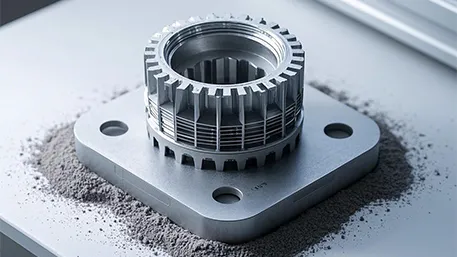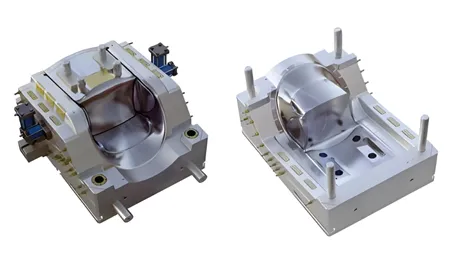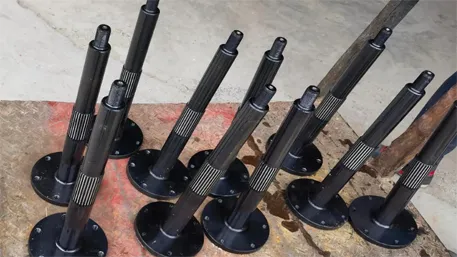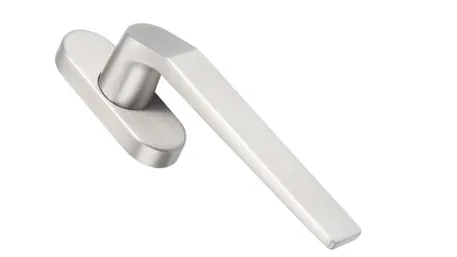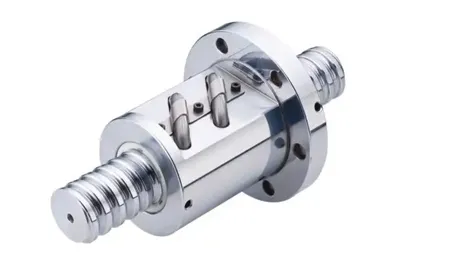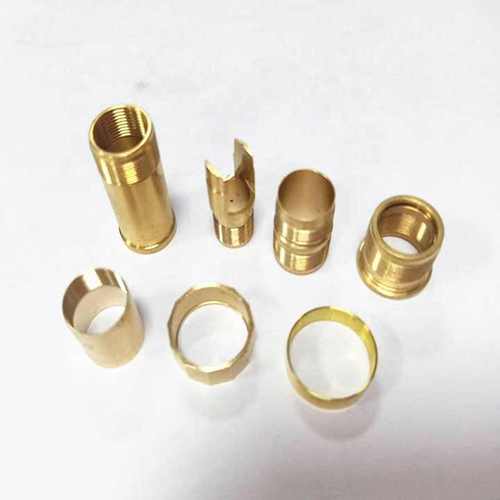In the modern industrial system, hardware fittings, as the basic components of equipment, their precision, performance, and adaptability directly affect the quality and reliability of end – products. With the upgrading of the manufacturing industry towards refinement and customization, CNC (Computer Numerical Control) technology, with its outstanding precision – machining capabilities, has become the core support for customizing hardware fittings. This article will systematically analyze the technical logic and industry value of custom CNC hardware fittings from aspects such as technical principles, materials engineering, process optimization, quality systems, and application practices.
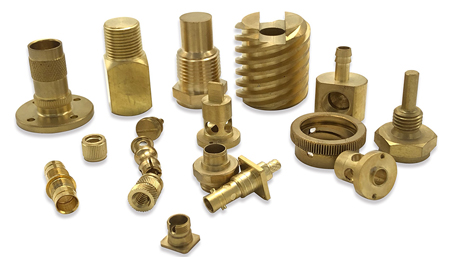
I. Core Advantages of CNC Technology in Customizing Hardware Fittings
Through digital programming and servo control systems, CNC technology has achieved three major technological breakthroughs in the processing of hardware fittings:
Nanometer – level Precision Control
The positioning accuracy of CNC machine tools can reach ±0.001mm, the repeat positioning accuracy is ±0.005mm, and the surface roughness is Ra≤0.4μm. For example, when processing miniature screws, the thread pitch diameter tolerance can be controlled within ±0.01mm to ensure precise mating with nuts.
Full – dimensional Molding of Complex Structures
Five – axis CNC equipment can complete the processing of spatial curved surfaces, thin – wall structures (wall thickness ≤ 0.1mm), and miniature features (aperture ≥ 0.1mm) that are difficult to achieve with traditional processes. For example, the special – shaped terminals of electronic connectors can be processed with multi – direction grooves and chamfers in one go through five – axis milling, avoiding error accumulation from multiple processes.
Material Adaptability and Process Universality
CNC technology is compatible with various metal materials such as stainless steel (e.g., 304, 316L), aluminum alloy (6061, 7075), brass (H62, H70), titanium alloy (TC4, TA2), and die – steel (P20, D2). For different material characteristics, cutting parameters can be optimized. For example, when processing titanium alloy, a low – speed (600 – 1200r/min), high – feed (0.1 – 0.2mm/z) strategy is adopted, combined with high – pressure internal – cooling tools, which can increase the tool life by more than 50%.
II. Materials Engineering and Selection Logic for Custom Hardware Fittings
Material selection is the basic link in customizing hardware fittings and needs to consider the mechanical properties, environmental tolerance, and cost requirements of the application scenario:
Mechanical – property – oriented
High – strength scenarios: 7075 aluminum alloy (tensile strength ≥ 572MPa) or die – steel (D2 steel with a hardness of HRC58 – 60) is selected, which is suitable for mechanical transmission components.
Lightweight requirements: 6061 aluminum alloy (density 2.7g/cm³, tensile strength 290MPa) or magnesium – aluminum alloy is used to reduce weight by more than 30% while maintaining strength.
Environment – adaptability Design
Corrosion – resistant environments: 316L stainless steel (PREN value ≥ 25) or titanium alloy (TA2) is used for chemical equipment fittings, which can resist chloride – ion corrosion and have a service life of more than 10 years.
High – temperature scenarios: 321 stainless steel (containing titanium – stabilizing elements) is selected, which can be used for a long time at 650℃ to avoid intergranular corrosion.
Cost – and – process Balance
Economical solutions: H62 brass (cost 40% lower than 304 stainless steel) is used for ordinary connectors, and production efficiency is improved through CNC high – speed cutting.
High – end applications: Although titanium – alloy fittings are relatively costly, in the aerospace field, they can reduce the overall system energy consumption through lightweight design.
III. Innovation and Optimization of CNC Machining Processes
In response to the diverse needs of hardware fittings, the CNC machining process achieves a double improvement in efficiency and quality through the following technological innovations:
Tool and Path Optimization
Using solid carbide tools (such as 0.5mm micro – diameter milling cutters) in combination with spiral interpolation paths, micro – holes with a depth – to – diameter ratio of 10:1 can be processed with a dimensional accuracy of ±0.005mm.
To address the problem of tool sticking during stainless – steel processing, TiAlN – coated tools and high – pressure internal – cooling technology are applied, reducing the cutting temperature by 30% and extending the tool life by 2 times.
High – Speed Cutting (HSC) Technology
When processing aluminum alloy, the spindle speed can reach 20000r/min, the feed rate is 4000mm/min, the material removal rate is increased by 40%, and at the same time, cutting – heat deformation is reduced to ensure the dimensional stability of thin – wall parts (wall thickness 0.3mm).
Five – axis Linked Composite Machining
Multiple – surface processing can be completed in one clamping. For example, for the complex curved surfaces and holes of automotive hardware parts, the processing efficiency is increased by 60%, and the position accuracy reaches ±0.01mm, avoiding errors caused by multiple clamps.
IV. Quality Control System for Custom Hardware Fittings
To ensure that products meet industry standards and customer requirements, custom CNC hardware fittings need to go through a strict quality control process:
Dimensional and Geometric Tolerance Inspection
A Coordinate Measuring Machine (CMM) is used for full – size scanning, and the tolerance of key dimensions (such as the diameter of shaft – type parts) is controlled within ±0.005mm.
Geometric tolerance inspection: The roundness error is ≤0.002mm, and the perpendicularity is ≤0.01mm/m to ensure the assembly accuracy of the fittings.
Material and Mechanical Property Verification
Spectral analysis is used to confirm the material composition. For example, the nickel content of 316L stainless steel should be ≥10% and the molybdenum content should be ≥2%.
Tensile tests, hardness tests (such as Rockwell hardness HRC), and fatigue tests are carried out to ensure that the mechanical properties meet ASTM or GB standards.
Surface Quality and Function Testing
A roughness tester is used to detect the Ra value of the surface. For precision fittings, it needs to reach Ra≤0.2μm.
Salt – spray tests are used to verify the corrosion – resistance performance. For example, 316L stainless – steel fittings need to pass a 1000 – hour neutral salt – spray test without rust.
V. Industry Application Practices of Custom CNC Hardware Fittings
Electronics and Communication Field
Custom brass (H70) connector terminals are precisely formed for contact shrapnels through CNC high – speed milling. The insertion and extraction life reaches more than 5000 times, and the contact resistance is ≤5mΩ.
Aluminum – alloy (6063) heat sinks are milled with fin structures by CNC, increasing the heat – dissipation area by 50% to meet the high – heat – density requirements of 5G base stations.
Machinery and Automation Equipment
Stainless – steel (304) precision gears are hobbed by CNC, with a tooth – profile accuracy reaching ISO 6, increasing the transmission efficiency by 15%.
Titanium – alloy (TC4) piston rods are turned and polished by CNC, with a surface roughness of Ra≤0.4μm, increasing the wear resistance by 3 times.
Construction and Decoration Industry
Custom stainless – steel (316L) curtain – wall fittings are bent and surface – brushed by CNC, with a weather – resistance of more than 10 years. They have an aesthetic appearance and are fingerprint – resistant.
Aluminum – alloy (6061) door and window hardware parts are die – cast and precisely processed by CNC, with a dimensional accuracy of ±0.02mm and an opening and closing life of 100,000 times.
VI. Technological Trends and Industry Outlook
Intelligent Processing Upgrade
The deep integration of AI algorithms and CNC systems can realize real – time optimization of processing parameters. For example, by monitoring cutting force and temperature through sensors and dynamically adjusting the feed rate, the processing efficiency can be increased by more than 20%.
Digital Twin Application
Virtual simulation technology pre – rehearses the processing process, discovers potential defects in advance, reduces trial – and – error costs, and shortens the new – product development cycle by 30%.
Green Manufacturing Practice
High – speed dry – cutting technology reduces the use of coolant, and 100% of waste metal materials are recycled, which is in line with the sustainable development goals of Industry 4.0.
Consult now to get your exclusive customization plan!
Whether it’s electronic precision connectors, mechanical transmission components, or construction and decoration hardware parts, our professional team will rely on the high – precision advantages of CNC technology, combined with materials engineering and process innovation, to provide you with a full – process customization service from design, processing to inspection. Click to leave a message, and let us use a rigorous technical logic and a reliable quality system to customize a cost – effective hardware – fitting solution for your project, helping you gain an edge in market competition!

